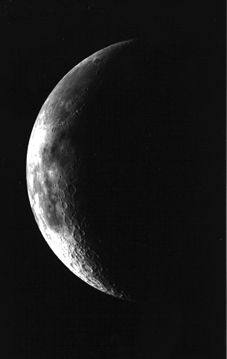![[NASA Logo]](/logo/nasa_logo.gif) Authors/Curators:
Authors/Curators:

High resolution tiff file (1.0M)
Location & Time Information
Date/Time (UT): 1990-12-08 T 13:00
Distance/Range (km): 400000.
Central Latitude/Longitude (deg): N/A
Orbit(s): Flyby
Imaging Information
Area or Feature Type: global view, crater, crescent
Instrument: Solid State Imaging CCD Camera
Instrument Resolution (pixels): 800 x 800, 8 bit
Instrument Field of View (deg): .46 x .46
Filter: green
Illumination Incidence Angle (deg): N/A
Phase Angle (deg): N/A
Instrument Look Direction: N/A
Surface Emission Angle (deg): N/A
Ordering Information
CD-ROM Volume: N/A
NASA Image ID number: P-37298
Other Image ID number: GLL/EM2 SSI
NSSDC Data Set ID (Photo): 89-084B-10A
NSSDC Data Set ID (CD): 89-084B-10C (raw image)
Other ID: N/A
![[NASA Logo]](/logo/nasa_logo.gif) Authors/Curators:
Authors/Curators:
Dave Williams, dave.williams@nasa.gov, (301) 286-1258
Code 690.1, NASA Goddard Space Flight Center
Greenbelt, MD 20771, USA
Jay Friedlander, jay.s.friedlander@nasa.gov, (301) 286-7172
Code 612.4, NASA Goddard Space Flight Center
Greenbelt, MD 20771, USA